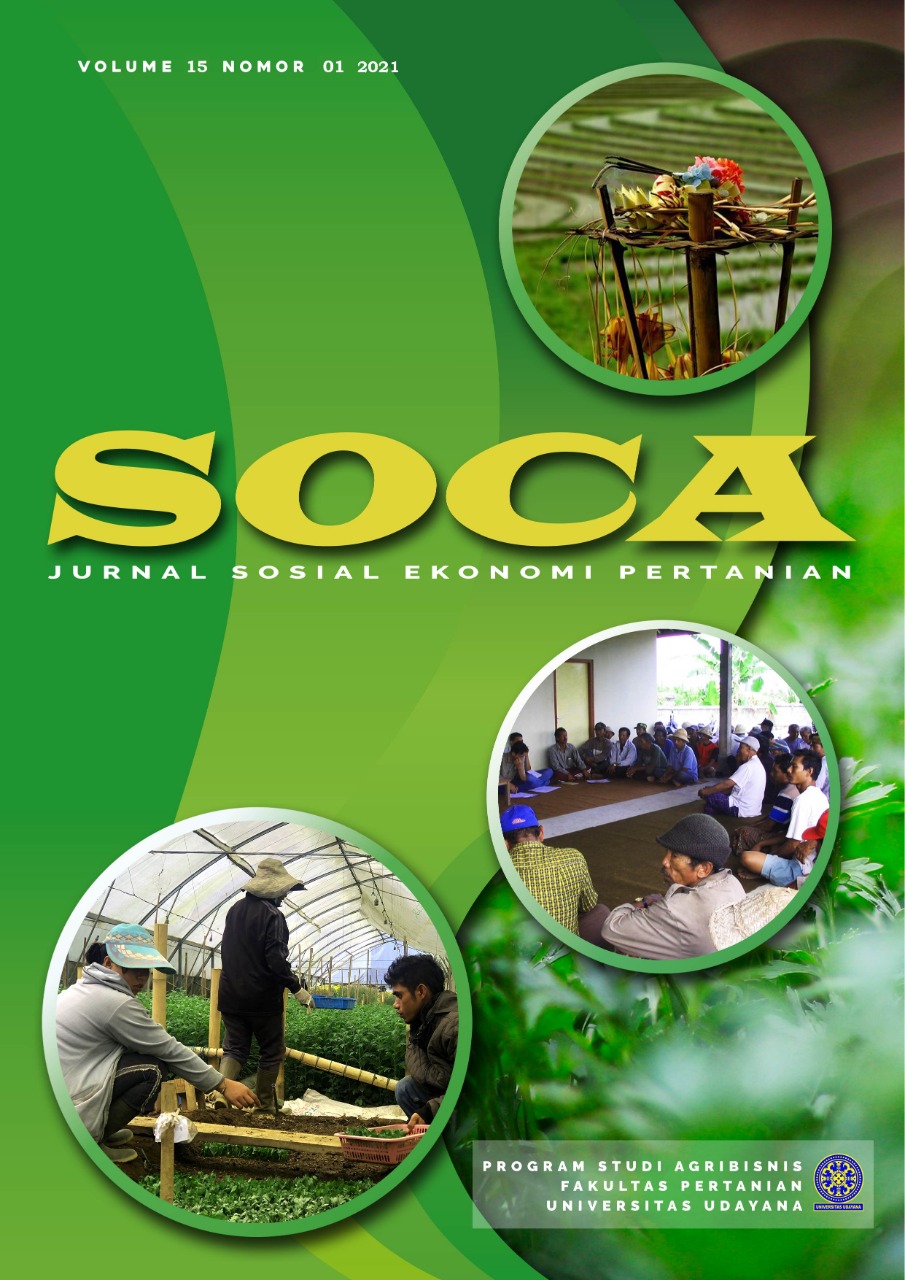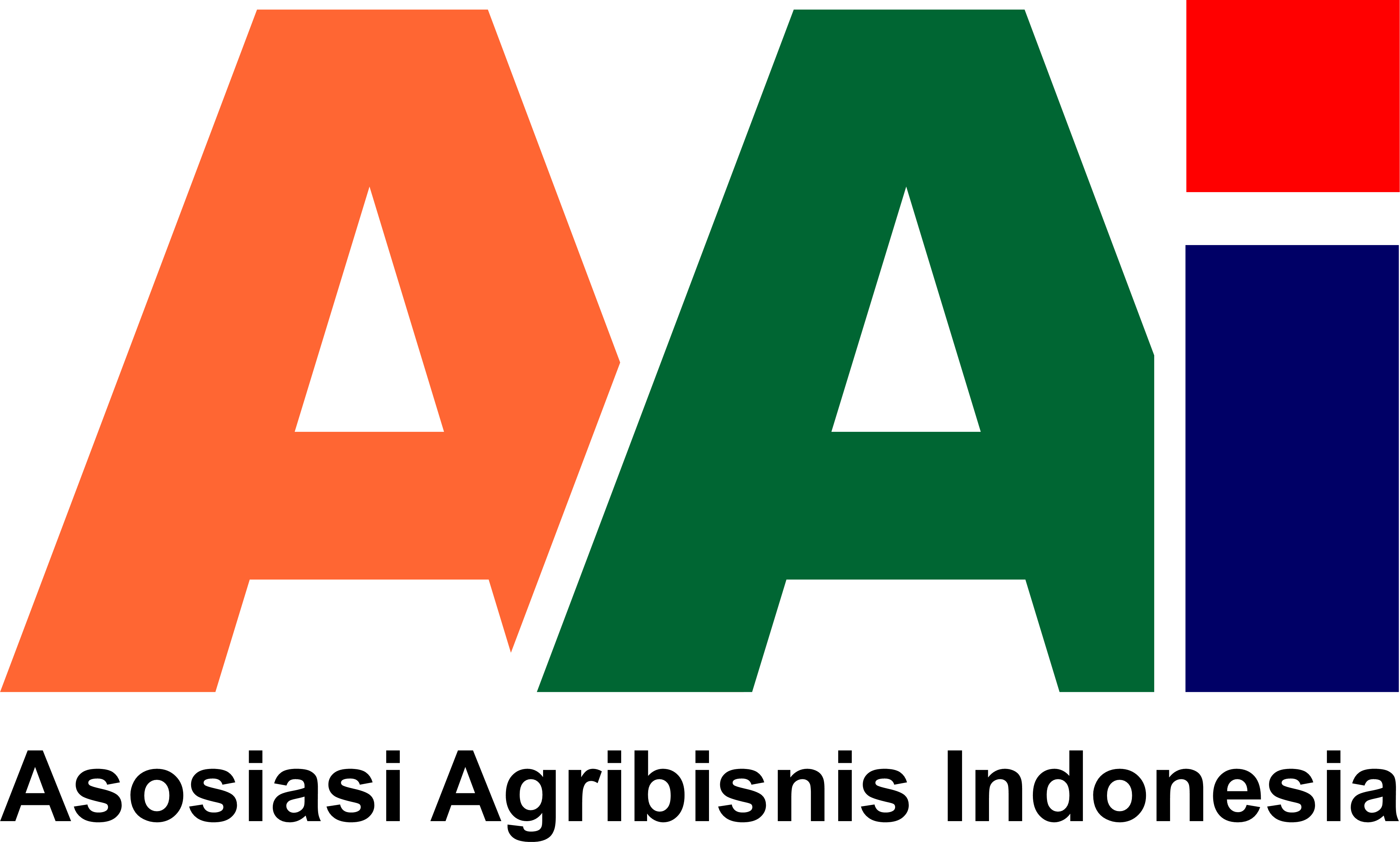Assessing Profitability Of Small-Scale Cocoa-Goat Mixed-Farming In West Sulawesi, Indonesia
Abstract
Cocoa is a key crop for small-scale farmers in Sulawesi, Indonesia. Decline in cocoa yield and cocoa price fluctuation have negatively affected the income of small-scale farmers. An approach to address the sustainability of small-scale cocoa farming is to diversify the household income via cocoa-goat mixed farming. This study aimed to assess whether cocoa-goat mixed farming was a viable and profitable enterprise for small-scale farmers in West Sulawesi by using cost benefit analysis (CBA). Three CBA models were developed to compare profitability of an existing medium-scale cocoa-goat mixed farm located in West Sulawesi with hypothetical small-scale cocoa monoculture and cocoa-goat mixed farming. The CBAs were informed by an interview using structured questionnaire and literature search. The principal CBA assessment criterion was net present value (NPV) while benefit cost ratio (BCR) and internal rate of return (IRR) were supplementary. Sensitivity analysis measured the impact of changes in key parameters on profit. Over a 25-year production cycle, the medium-scale cocoa goat mixed farm is a profitable enterprise, earning an estimated profit of USD 90,403. At small-scale level, the findings suggest that engaging in small-scale cocoa goat mixed farming has potential to increase household income by 27% of profit from the cocoa monoculture.
Downloads
References
AIC. (2018). Sustainability and profitability of cocoa-based farming system in Indonesia. Melbourne, Australia
Agoume, V., Birang, A.M. (2009). Impact of Land-use Systems on some Physical and Chemical Soil Properties of an Oxisol in the Humid Forest Zone of Southern Cameroon. Tropicultura, 27, 15-20.
Arsyad, M., Sinaga, B. M., & Yusuf, S. (2011). Analysis of the impact of export tax and price subsidy policies on Indonesian cocoa exports and production post-Uruguay round. Jurnal Sosial Ekonomi Pertanian, 8(1), 63–71. http://103.195.142.17/handle/123456789/715
Bank Indonesia. (2018a). BI rate. Retrieved from http://www.bi.go.id/en/moneter/bi-rate/data/Default.aspx
Bank Indonesia. (2018b). Foreign exchange rate. Retrieved from http://www.bi.go.id/en/moneter/informasi-kurs/transaksi-bi/Default.aspx
Bedford, A., Blowfield, M., Burnett, D., & Greenhalgh, P. (2002). Value chains: lessons from the Kenya tea and Indonesia cocoa sectors. Technical report in Focus 3. London, UK.: Natural Resources Institute and the Resource Centre for the Social Dimension.
Burger, M., Jackson, L.E. (2003). Microbial immobilization of ammonium and nitrate in relation to ammonification and nitrification rates in organic and conventional cropping systems. Soil Biology & Biochemistry,35, 29-36. https://doi.org/10.1016/S0038-0717(02)00233-X
Doloksaribu, L., McLachlan, B. P., Copland, R. S., & Murray, P. J. (2014). Constraints to, challenges of, and opportunities for rearing goats in Bali Province. A case study: Rearing goats in Karangasem Regency. International Conference on Agriculture, Biology and Environmental Sciences, Bali, Indonesia.
FAO [Food and Agriculture Organization]. (2017). Country factsheet on food and agriculture policy trends. Retrieved from http://www.fao.org/3/a-i7696e.pdf
Gunawan, & Budisatria, I. G. S. (2016). Technology innovation in cocoa-goats integration system for increasing of productivity and farmers income in Kulon Progo Regency, Yogyakarta Special Region Province, Indonesia. Asian Journal of Animal Sciences, 10(6), 273–279. https://doi.org/10.21059/buletinpeternak.v41i4.25002
ICCO [International Cocoa Organization]. (1998). How much time does it take for a cocoa tree to become productive? https://www.icco.org/faq/57-cocoa-production/129-how-much-time-does-it-take-for-a-cocoa-tree-to-become-productive.html
ICCO. (2019). Quarterly Bulletin of Cocoa Statistics Cocoa year 2018/19. https://www.icco.org/statistics/production-and-grindings/production.htm
ICCO. (2020). May 20 quarterly bulletin of cocoa statistics. https://www.icco.org/about-us/icco-news/419-may-2020-quarterly-bulletin-of-cocoa-statistics.html
International Monetary Fund. What is the central bank policy rate? Retrieved from http://datahelp.imf.org/knowledgebase/articles/484375-what-is-the-central-bank-policy-rate
Irfany, I, M., Nuryartono, N., Kiki, A., Sidik, D., Kim, Mcmahon, P. J., & Guest, D. (2017). Improving cocoa smallholder livelihoods in Sulawesi: strategies and interventions. Unpublished.
Janudianto, J., Roshetko, J. M., & Mahrizal, M. (2014). Cacao Agroforestry System (CAS) improving productivity and profitability of smallholder cacao in Sulawesi. World Congress on Agroforestry, Dehli, India.
Johnson, G. I., Iswanto, A., Ravusiro, J., Keane, P. J., Holiwood, N., Lambert, S. V., & Guest, D. I. (2004). Linking farmers with market: the case of cocoa. ACIAR Proceedings No. 119e. Canberra.
Lazada. (2018). Retrieved from https://www.lazada.co.id/co.id
Lebbie, S. H. B. (2004). Goats under household conditions. Small Ruminant Research, 51, 131–136. https://doi.org/10.1016/j.smallrumres.2003.08.015
Lebe, D., Fahdli, Z., & Philips, M. (Eds.). (2017). Access to finance: The cocoa sector training for financial institutions. http://www.swisscontact.org/fileadmin/user_upload/COUNTRIES/Indonesia/Documents/Publications/110917_-_Bank_Training_Manual_-_FINAL_-_web_version.pdf
Moriarty, K., Elchinger, M., Hill, G., Katz, J., Barnett, J. (2014). Cacao Intensification in Sulawesi: A Green Prosperity Model Project, MCA. Report NREL/TP-5400-62434. Millenium Challenge Account, Produced under direction of the Millennium Challenge Corporation by the National Renewable Energy Laboratory (NREL) under Interagency Agreement IAG-12-1866 and Task No WFQ9.1017.
Moser, G., Leuschner, C., Hertel, D., Hölscher, D., Köhler, M., Leitner, D., Michalzik, B., Prihastanti, E., Tjitrosemito, S.,& Schwendenmann, L. (2010). Response of cocoa trees (Theobroma cacao) to a 13-month desiccation period in Sulawesi, Indonesia. Agroforestry Systems,79(2), 171–187. https://doi.org/10.1007/s10457-010-9303-1
Mulia, S., McMahon, P., Purwantara, A., Djufry, F., Lambert, S., Keane, P., Guest, D., (2019). Effect of organic and inorganic amendments on productivity of cocoa on a marginal soil in Sulawesi, Indonesia. Experimental Agriculture,55, 1-20. https://doi.org/10.1017/S0014479717000527
Murray, P., Murray-Prior, R., Atsir, A., Asja, M., Nasrullah, Yusmasari, & Nurhayu, A. (2011). Improving goat production in integrated estate cropping systems in South Sulawesi. Canberra, Australia: Australian Center for International Agricultural Research.
Neilson, J. (2007). Global markets, farmers and the state: Sustaining profits in the Indonesia cocoa sector. Bulletin of Indonesian Economic Studies. 43(2): 227–250. https://doi.org/10.1080/00074910701408073
Priyanto, D. (2008). Model usaha tani integrasi kakao kambing dalam upaya peningkatan pendapat petani. Wartazoa. 18, 46–56.
Purwantara, A., Peters, M., Faisal, Sunarya, Neilson, J., Lambert, S., Keane, P. & Guest, D. (2017). Microbial study on fertilizer trials and compost production on cocoa through integration with goats. Indonesia.
Rifin, A., & Nauly, D. (2013). The effect of export tax on Indonesia’s cocoa export competitiveness. AAERES Annual Conference, New South Wales, Australia
Rusdiana, S., & Martono, B. (2014). Financial analysis of business diversification of cocoa plantation and goat farming. Sikuler Inovasi Tanaman dan Penyegar/SIRINOV,2(3), 157–170.
Rushton, J. (2009). The economics of animal health and production. London, U.K.: CAB International.
Sodiq, A. (2004). Doe productivity of peranakan etawah goats and factors affecting them in Indonesia. Journal of Agriculture and Rural Development in the Tropics and Subtropics. Retrieved from https://www.uni-kassel.de/upress/online/frei/978-3-89958-074-7.volltext.frei.pdf
Sodiq, A., Adjisoedarmo, S., & Tawfik, E. S. (2003). Reproduction rate of kacang and peranakan etawah goats under village production systems in Indonesia. International Research on Food Security, Natural Resource Manageement and Rural Development, Gottingen, Germany.
Tiessen, H., Cuevas, E., Chacon, P. (1994). The role of soil organic matter in sustaining soil fertility. Nature.371: 783-785. https://doi.org/10.1038/371783a0
VECO. (2011). Increased incomes for Indonesian cocoa farmers in sustainable markets: NGO-private sector cooperation on Sulawesi island. http://exchange.growasia.org/system/files/indonesia-cocoa-case.pdf
Witjaksono, J., & Asmin. (2016). Cocoa Farming system in Indonesia and its sustainability under climate change. Agriculture, Forestry and Fisheries. 5(5): 170. http://dx.doi.org/10.11648/j.aff.20160505.15













